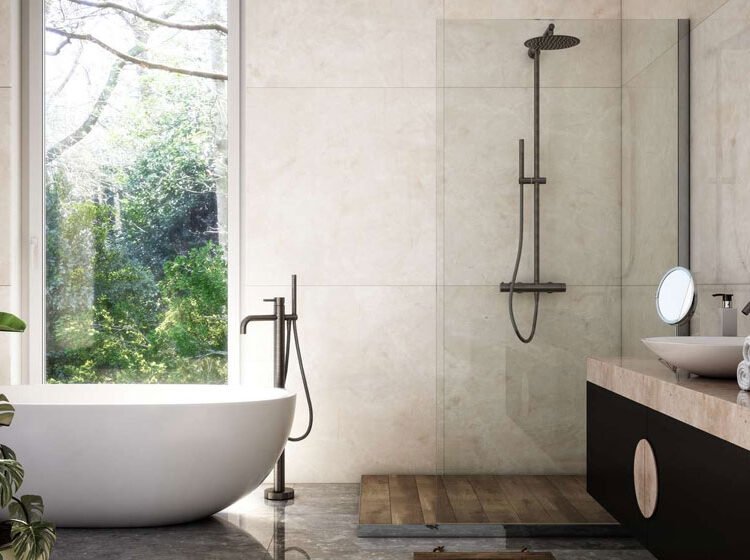If you’re considering a kitchen remodel or an upgrade, one element you shouldn’t overlook is the kitchen island. Kitchen islands are highly sought-after features for new and renovated kitchens because they provide functional space in an area often underutilized—the center of the room. However, selecting the right kitchen island can be a daunting task, as the options are diverse, ranging from simple, portable units to complex, permanent structures with built-in appliances, plumbing, or wiring services.
Kitchen Island Basics
A kitchen island is a cabinet or countertop unit that’s accessible from all sides and not enclosed by walls. It can either be portable or fixed, spanning the gamut from a modest work surface to a substantial, self-contained kitchen in its own right.
The 9 Best Kitchen Islands of 2023
1. Fully Functional Kitchen Island
The fully functional kitchen island provides everything your primary countertops do, including electrical outlets, a sink, drainage, and an ample countertop surface. With an overhanging countertop, it also offers space for activities such as meal preparation, in-kitchen dining, or entertainment.
The cost of installing a fully functional island can escalate due to the addition of plumbing. Integrating the sink’s supply and drainage systems into the island might require routing pipes under the floor to connect to the main water supply and drainage lines. Moreover, ensuring proper drain venting can be complex. This is typically addressed with a high-loop inside the cabinet, running down under the floor to connect with a traditional wall vent stack ascending through the roof. Alternatively, a special air-admittance valve (AAV) can be used if permitted by local building codes, which fits inside the cabinet and allows fresh air into the system, preventing siphoning issues during water drainage.
Best Uses: Fully functional kitchen islands are most suitable for large, open-concept kitchens. Incorporating all these services into your island may be expensive, so it’s essential to have a valid reason for doing so. Unless you require an auxiliary cooking and prep area, it’s often wiser to stick with a more basic island.
Pros:
- Expands workspace
- Increases home value
- Ideal for open kitchens
Cons:
- Expensive
- Not easily movable
- Higher installation costs
Tip: During the planning phase, arrange empty boxes in the intended island shape to get a real-world, three-dimensional sense of how it will look and function.
2. Double-Tiered Kitchen Island
The double-tiered kitchen island serves a dual purpose: it caters to both cooking and dining needs. It features two levels, with the lower one designed for cooking and the higher one for eating. This design adheres to ergonomics, as the optimal counter height for cooks is 36 inches, while the best height for a bar top is 42 inches. However, the transition from the cooking surface to the eating surface reduces the overall preparation space.
Best Uses: Double-tiered kitchen islands are most suitable for large family kitchens, entertainment-centric kitchens, or households that frequently dine within the kitchen.
Pros:
- Ergonomically designed
- Ideal for open kitchens
- Adds real estate value
Cons:
- Divides the kitchen space
- Separates the kitchen from adjacent areas
- Considered an expensive option
3. Base Cabinet Kitchen Countertop
This classic kitchen island type is constructed from pre-existing materials—a base cabinet (or multiples) placed back-to-back—topped with countertop material. These islands are generally fixed in place, often anchored to the floor using cleats. Sometimes, they are complemented by upper cabinets suspended from the ceiling.
Since this island is a built-in unit, building codes may categorize it as such. This classification would require electrical service if the countertop area exceeds 12 x 24 inches.
Best Uses: A base cabinet kitchen island is versatile and can be added to various kitchen layouts, serving as a great starting point, even if you anticipate the addition of more features in the future.
Tip: Running electrical power to a fixed island can be expensive and invasive, particularly in houses with slab-on-grade foundations and no basements for easy electrical wiring. A potential solution is running wires from the ceiling through a pillar.
Pros:
- Easy to construct
- Flexible
- DIY-friendly
Cons:
- Countertop must be customized
- Requires carpentry work
- Limited by cabinet sizes
4. Work Table Kitchen Island
A work table essentially functions as a countertop without built-in storage. It is typically set at the same height as perimeter countertops, although smaller, free-standing work tables can be more flexible. Larger work tables can be permanently anchored to the floor, whereas smaller ones remain unattached, providing mobility. Larger, fixed work surfaces will require electrical service.
A work table kitchen island is an excellent choice for smaller kitchens, as it has a smaller visual footprint. It is also well-suited for those who prefer to sit on a stool with their knees beneath the counter while preparing food.
Best Uses: A work table kitchen island is ideal for adding affordable working space with minimal visual impact. It can be tucked away when not needed, offering a chance to experience the kitchen island concept before committing to a permanent installation.
Pros:
- Can serve as an eating counter
- Lightweight visual footprint
- Relatively cost-effective
Cons:
- Lacks built-in storage
- Style may not match the kitchen
- Might slide on the floor
Continue to 5 of 6 for more kitchen island options.






